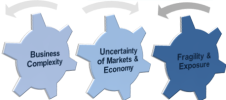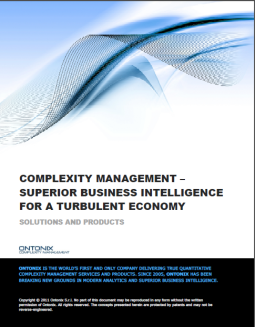2011 IBM Global Business Resilience and Risk Study:: cling to the wreckage of failure…or invest for the future?
Tuesday, 28 February, 2012 Leave a comment
 There isn’t much point in me, again, reiterating WHY “Corporate Resilience” [Nassim Taleb’s “antifragility”] is so important in the Digital Age! So, whilst I am slightly concerned that this report seems to infer this is more of an issue for larger firms, it is probably best I let any interested readers make their own minds up on the matter.
There isn’t much point in me, again, reiterating WHY “Corporate Resilience” [Nassim Taleb’s “antifragility”] is so important in the Digital Age! So, whilst I am slightly concerned that this report seems to infer this is more of an issue for larger firms, it is probably best I let any interested readers make their own minds up on the matter.
Traditionally, risk management tended to focus on a combination of risk transfer—achieved through insurance or other financial products—and business continuity planning to keep the organization running during a crisis. Beginning in the 1980s some companies started to develop enterprise risk management (ERM) programs building on the “circle of risk” first conceptualized in 1974 by Gustav Hamilton, risk manager of Sweden’s Statsföretag AB. The idea was to link different risk management activities such as identification, assessment, control, financing, monitoring and communication into a continuous process. In many cases, however, each element continued to operate within organizational silos.
The economic downturn beginning in 2008 triggered new interest in risk management, driving adoption of truly holistic approaches where managing risk is inherent to every decision. Today, leading organizations are pushing these concepts further to develop enterprise-wide business resilience strategies. They strive to make the ability to respond rapidly to all kinds of unexpected events—opportunities as well as threats— part of the corporate culture. This means building a business resilience strategy that engages everyone in the organization.
















